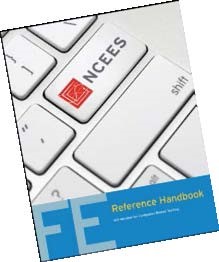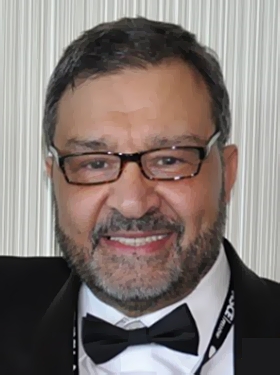Conquering the FE & PE Exams -
"PAT" Stands for Parallel-Axis Theorem
By Ahmet Zeytinci, P.E., F-NSPE

I was an avid reader of science fiction, and back in early eighties I read “X” Stands for Unknown, by Isaac Asimov, a collection of seventeen nonfiction science essays published in a science fiction magazine. The subtitle of this month’s article was inspired by that book and following some of our readers’ requests, I’ve decided to write about the Centroids, Moments of Inertia, and “Parallel Axis Theorem for an Area” which is one of the most important theorems in mechanics.
In the FE and PE exams there will be several questions about finding the centroids and moments of inertia of simple or composite areas. Both topics are listed as the “suggested required topics” at the top of page 266 of the new NCEES-Reference Manual (CBT-Version 9.1). Without getting into complex mathematics or derivations, let’s start with the “centroid of a cross-sectional area.”
In simplest terms, the centroid is a point that defines the geometrical center of an object or area and has to be determined first when solving problems in bending of beams, columns, and finding the deflections of flexural members, to name a few. The centroid of an area can be defined by considering the first moment of area about an axis, Integral (x.dA) and here x is known as the moment arm. On the other hand, the second moment of inertia, which is Integral (x2).dx is referred to as the moment of inertia for an area. Many problems in the FE and PE exams will require you to find the moments of inertia of any given area about any given axis, mostly horizontal centroidal axis.
In the NCEES-Reference Handbook, “Centroids” and “Moment of Inertia” are introduced on page 36, and on page 64, Moment of Inertia and “PAT” is defined. “The moment of inertia of an area about any axis is defined as the moment of inertia of the area about a parallel centroidal axis plus an additional term equal to the area multiplied by the square of the perpendicular distance d from the centroidal axis to the axis in question.” Two PAT formulas are in the handbook after the definition.
Visit the problems/examples for examples and supplemental problems to help demystify these concepts. Also, I strongly remind readers to review the formulas on page 65 of the Reference Handbook before taking the exam. When you need a formula for an area, centroid, moment of inertia, radius of gyration and product of inertia for simple shapes, go directly to PAGE 65 of the Handbook without wasting time. Rectangles, triangles, circles, circular sectors are on pages 65-67.
As always, I shall close with a final thought: during the FE or PE exams, the more time you spend on a difficult question, the more time you risk second guessing yourself. Trust your intuition. You have worked hard, don’t doubt yourself! Come back to that question later when you might have a clearer mind.
Until next time,
Dr. Z.









